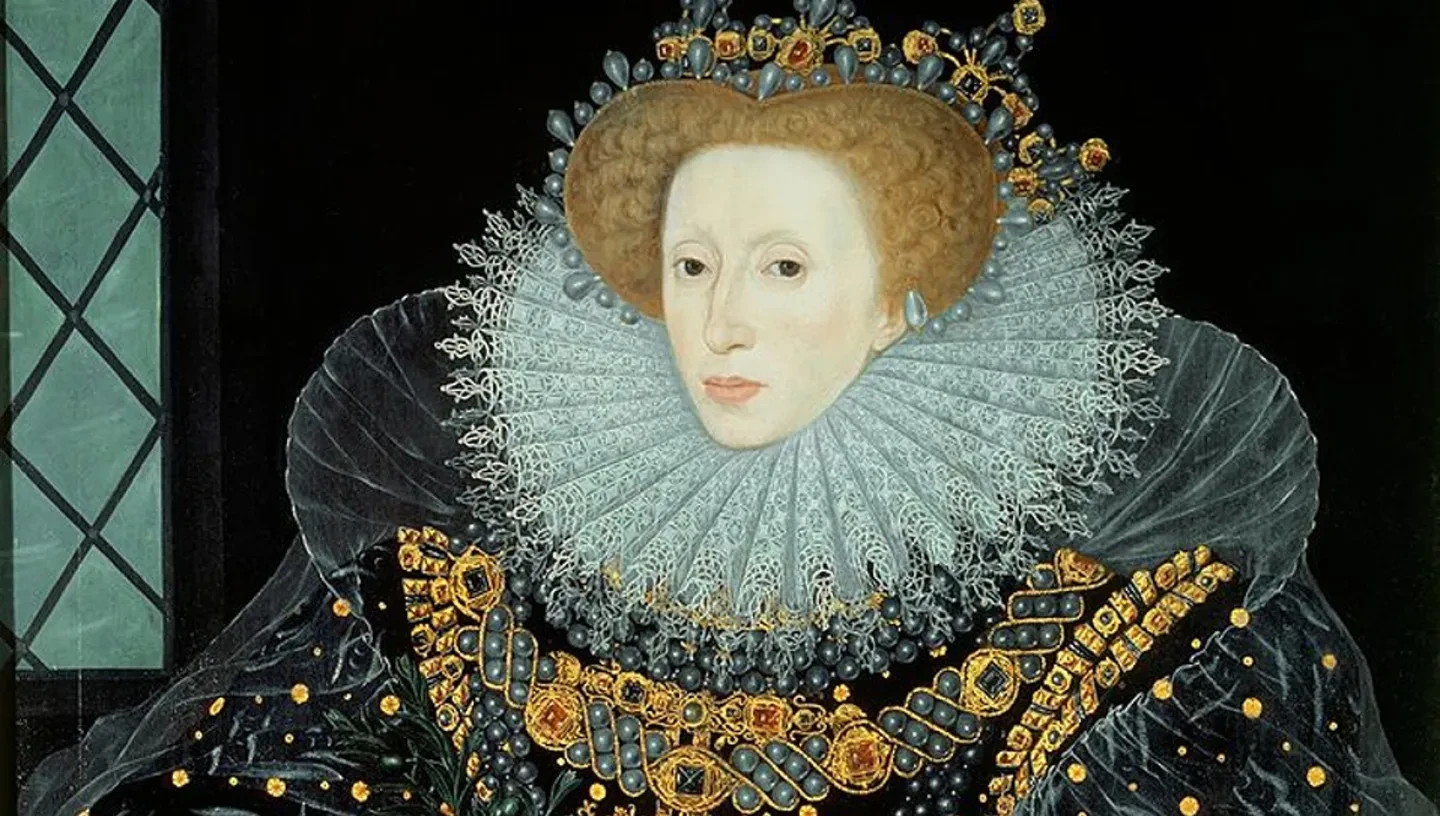
Elizabeth I's Royal Wardrobe
Queen Elizabeth I was very conscious of her appearance, and her image was engineered to convey wealth, authority and power.
She knew that her actions and image formed her identity, which in turn became a symbol for England. During her reign Elizabeth’s image was carefully engineered to convey wealth, authority and power, both at home and abroad.
Dress and social status
As her reign progressed, Queen Elizabeth began to dress for the part of the ‘Virgin Queen’, an image that she had created to transmit the nation's growing stature and confidence. Her wardrobe was full of gowns of rich fabrics adorned with jewels and elaborate surface detail, which were both imposing and communicated wealth and status. Elizabeth also demanded a sense of style from those around her and her courtiers spent vast sums of money on their wardrobes to catch the Queen’s eye.
In Elizabeth’s era, dress was also a means of expressing social hierarchy and the Queen believed that one's dress should suit, but not exceed, one's rank. Elizabeth's appearance stressed her rank as head of state and church, and 'pecking order' was reinforced by legal restrictions.
None shall wear
'Sumptuary laws' were originally brought in by Henry VIII and continued under Queen Elizabeth I until 1600. They were enacted to enforce order and obedience to the Crown, and to allow the assessment of status at a glance.
For example, under the sumptuary law issued at Greenwich, 15 June 1574, only duchesses, marchionesses, and countesses were allowed to wear cloth of gold, tissue and fur of sables in their gowns, kirtles, partlets and sleeves. Other dress restrictions were listed for other levels of status in society too.
What was Elizabeth I's mask of youth?
Elizabeth's wardrobe
As Elizabeth's love of clothes and jewellery became common knowledge, they became increasingly offered as New Year's gifts. On 1 January 1587 Elizabeth received over 80 pieces of jewellery, including many from her suitors. From an inventory compiled in 1587 by Mrs Blanche Parry on her retirement as Elizabeth's lady of the bedchamber, we know that Elizabeth had 628 pieces of jewellery.
This culture of gift giving helped with the expense of maintaining Queen Elizabeth’s splendid wardrobe, as did the practice of altering garments with new sleeves, bodices or collars to update them. The sheer expense of Elizabeth's wardrobe meant that little has survived. Gowns and accessories were recycled, reused, given away as gifts and sometimes used as payment to those in her service.
The cost of the Royal Wardrobe
Detailed accounts of the Royal Wardrobe were kept. These records detail the types, amounts and cost of fabrics purchased, the suppliers used and the type of garment produced. At her death, over 2000 gowns were recorded in Elizabeth's wardrobe. These accounts and portraits of the period provide much of the available information about Elizabethan dress.
The Armada Portrait
Recently saved for the nation, the Armada Portrait commemorates the most famous conflict of Elizabeth I's reign – the failed invasion of England by the Spanish Armada in summer 1588. This iconic portrait is now back on public display in the Queen's House after careful conservation.
Find out more and visit The Armada Portrait
Using our collections for research
The collections at Royal Museums Greenwich offer a world-class resource for researching maritime history, astronomy and time.


